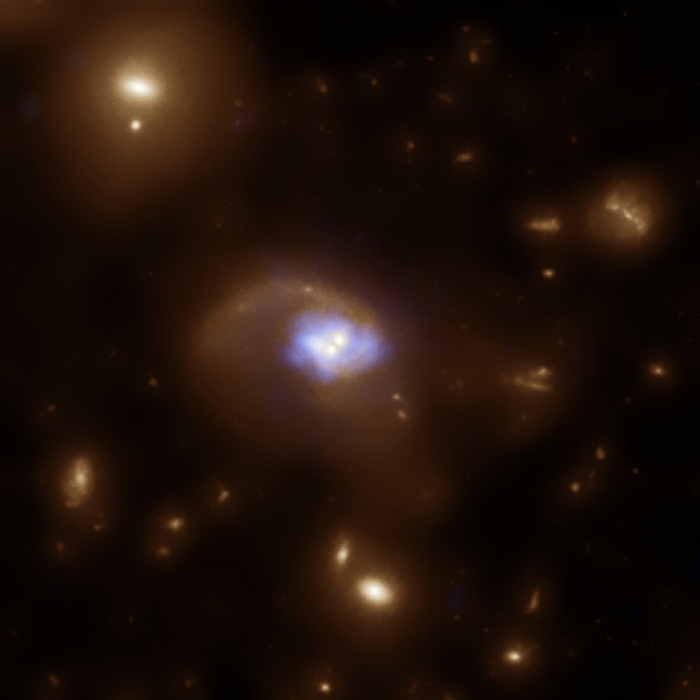
 Credit: X-ray: NASA/CXC/SAO/F. Civano et al. Optical: NASA/STScI
Credit: X-ray: NASA/CXC/SAO/F. Civano et al. Optical: NASA/STScI
Recoil
As we try to extend our cosmic census of black holes, we find more and more examples of bizarre behavior. The image above is a case in point. This image is a composite of a galaxy merger seen in visible light (from the Hubble Space Telescope, in brown) and in X-rays (from the Chandra X-ray Observatory, in blue), obtained as part of the large Cosmic Evolution Survey (a study of how galaxies change with time and environment). The Hubble image shows two bright unresolved sources near the center of this merged galaxy, while the Chandra image shows associated X-ray emission from hot gas in the vicinity of these sources. Detailed study with the Very Large Telescope and the Magellan telescope show that there is a large difference in speed between the two optical sources of at least about three million miles an hour, while Chandra finds evidence for fast flows of hot material in the system. Astronomers believe that this large velocity difference has to do with some type of dynamical interaction between black holes. In one scenario, the source to the lower left is thought to have come too close to a pair of merging black holes and was slingshotted outward. In an alternative scenario, the source at the lower left might represent a merged pair of black holes shot from the center of the galaxy due to the asymmetrical force of the gravitational radiation it would have emitted during the merger process. But are such interactions common or rare? Maybe LISA can tell us.
Published: July 5, 2010
<
HEA Dictionary ● Archive
● Search HEAPOW
● Other Languages
● HEAPOW on Facebook
● Download all Images
● Education ● HEAD
>

Each week the HEASARC
brings you new, exciting and beautiful images from X-ray and Gamma ray
astronomy. Check back each week and be sure to check out the HEAPOW archive!
Page Author: Dr. Michael F. Corcoran
Last modified Monday, 26-Feb-2024 17:20:47 EST


